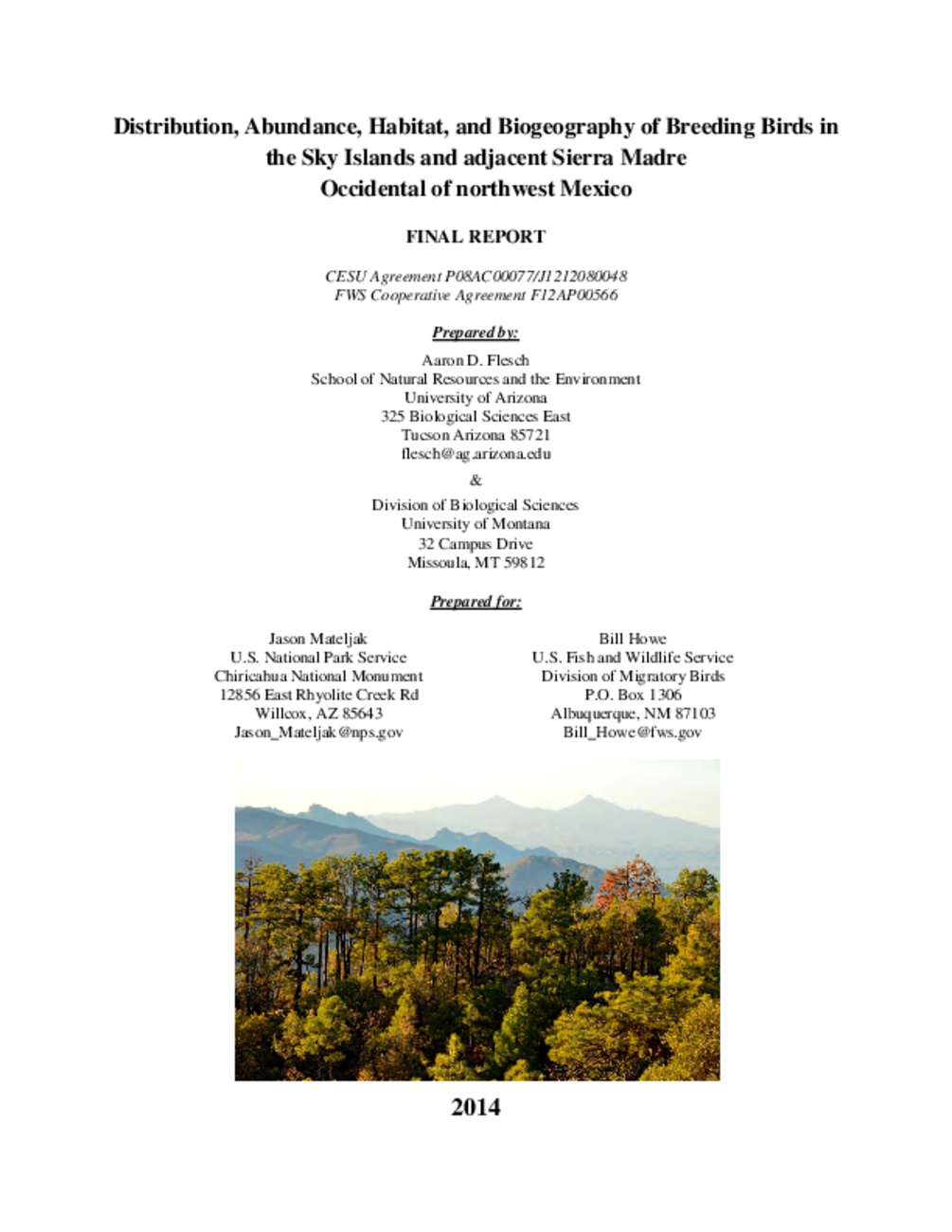Distribution, Abundance, Habitat, and Biogeography of Breeding Birds in the Sky Islands and adjacent Sierra Madre Occidental of northwest Mexico
This report summarizes my efforts to describe the distribution, abundance, habitat, and biogeographical relationships of breeding birds in montane vegetation communities in the Sky Islands and adjacent Sierra Madre Occidental of northwest Mexico. Following extensive commercial logging in the early and mid-1900s, vegetation in many Sky Islands in Mexico has matured, land uses are now limited in many ranges, and vast areas of montane forest and woodland in the region are essentially de facto wilderness, especially at higher elevations. Nonetheless, threats to montane vegetation communities are increasing due to a range of anthropogenic and other stressors, many of which are linked to global climate change. Thus, current information on wildlife and vegetation communities that is lacking in many areas, is important for guiding management and conservation, for monitoring changes in populations and communities over time, and for understanding the ecology and natural history of this unique and biologically diverse region.
In 2008, the U.S. National Park Service sponsored researchers at the University of Arizona (UA) and University of Montana (UM) to describe bird communities and bird-habitat relationships in the Sky Islands and adjacent Sierra Madre of northwest Mexico in collaboration with Comisión Nacional de Áreas Naturales Protegidas (CONANP). CONANP manages Reserva Forestal Nacional y Refugio de Fauna Silvestre Sierras de los Ajos-Bavispe (hereafter Ajos-Bavispe), which is approximately 180,000 ha in area and includes portions of seven Sky Islands. Soon after, Sky Island Alliance (SIA), a Tucson-based non-profit organization dedicated to conservation of the Sky Islands region, was sponsored by the Veolia Environment Foundation of France to gather and synthesize data on plant and animal distribution and to build capacity for conservation and management in the Sky Islands region of Mexico. Because our projects included similar goals, we collaborated to increase the capacity of our efforts. In 2012, the Southwest Region of the U.S. Fish and Wildlife Service, Division of Migratory Birds, provided important supplementary support to facilitate expanded survey coverage in our final field season and to assist with data analyses and reporting. It is my hope that information summarized here fills important knowledge gaps and is useful for management and conservation in this region.

